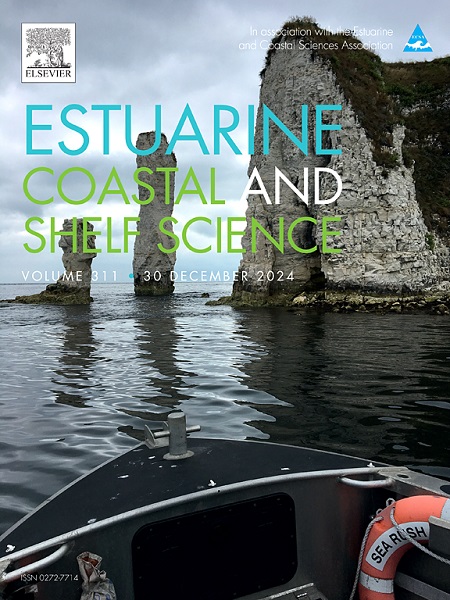Depth-dependent dynamics and acoustic niche partitioning of fish sounds in mesophotic coral reefs
IF 2.6
3区 地球科学
Q1 MARINE & FRESHWATER BIOLOGY
引用次数: 0
Abstract
According to the acoustic niche hypothesis, the soundscape is a finite resource, theoretically implying that soniferous species whose sounds compose it within a given habitat must share this resource to minimize competition. However, depth-related patterns in this partitioning are still poorly understood. This study aims to compare the diel dynamics and realized acoustic niches of fish sounds at two depths (60 and 120 m) in mesophotic coral reefs of the Tuamotu Archipelago, French Polynesia, over a 62-h period. Two complementary objectives are pursued: (1) to investigate depth-related patterns in the diel cycle of fish sounds using generalized additive models, and (2) to assess whether their realized acoustic niches change between depths. Although most sound types were shared between 60 and 120 m, the study revealed that the dynamics of fish sounds varied significantly between the two depths. It also supported clear diel patterns. As depth increased, frequency-modulated sounds became more prominent at night, while the opposite trend was observed for pulse series sounds. At the community level, acoustic activity was more concentrated during short time periods at night at 120 m. Different sound types were either produced at distinct times or differed in pulse period range or frequency spectrum during periods of temporal overlap. The structure of realized acoustic niches also differed between the two depths. The consistent increase in the abundance of frequency-modulated sounds under reduced light conditions (both at night and in deeper waters) may reflect the need for more stereotyped acoustic signals, suggesting a potential adaptation to low-light environments.
中孔珊瑚礁中鱼类声音的深度依赖动力学和声学生态位划分
根据声学生态位假说,声景观是一种有限的资源,从理论上说,在给定的栖息地中,由声音构成声景观的有音物种必须共享这一资源,以减少竞争。然而,对这种划分中与深度相关的模式仍然知之甚少。本研究旨在比较法属波利尼西亚土阿莫土群岛(Tuamotu Archipelago, French Polynesia)两个深度(60米和120米)的介孔珊瑚礁中鱼类声音在62小时内的动态变化和实现的声学生态位。本研究的两个互补目标是:(1)利用广义加性模型研究鱼类声音的深度相关模式;(2)评估它们实现的声学生态位是否在不同深度之间发生变化。虽然大多数声音类型在60到120米之间共享,但研究表明,鱼类声音的动态在两个深度之间变化很大。它还支持清晰的饮食模式。随着深度的增加,频率调制的声音在夜间变得更加突出,而脉冲序列的声音则相反。群落水平上,120 m处夜间短时间内声活动较为集中。不同类型的声音要么在不同的时间产生,要么在时间重叠期间脉冲周期范围或频谱不同。在两个深度之间,实现的声学生态位结构也有所不同。在弱光条件下(夜间和深水中),频率调制声音丰度的持续增加可能反映了对更多刻板声信号的需求,表明对弱光环境的潜在适应。
本文章由计算机程序翻译,如有差异,请以英文原文为准。
求助全文
约1分钟内获得全文
求助全文
来源期刊
CiteScore
5.60
自引率
7.10%
发文量
374
审稿时长
9 months
期刊介绍:
Estuarine, Coastal and Shelf Science is an international multidisciplinary journal devoted to the analysis of saline water phenomena ranging from the outer edge of the continental shelf to the upper limits of the tidal zone. The journal provides a unique forum, unifying the multidisciplinary approaches to the study of the oceanography of estuaries, coastal zones, and continental shelf seas. It features original research papers, review papers and short communications treating such disciplines as zoology, botany, geology, sedimentology, physical oceanography.

 求助内容:
求助内容: 应助结果提醒方式:
应助结果提醒方式:


